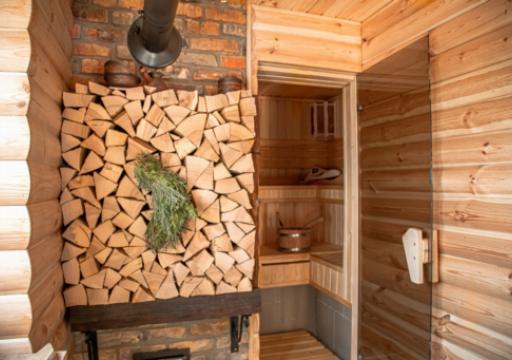Safety Considerations When Choosing Wood for Wood-Burning Saunas
22 December 2025 by Mila R.When it comes to wood-burning saunas, safety should always be a top priority. Selecting the right type of wood, maintaining and inspecting sauna stoves regularly, and practicing safe wood storage and handling are all crucial aspects to consider. By taking these safety considerations into account, you can ensure a safe and enjoyable sauna experience for you and your loved ones.

Selecting the Right Type of Wood for Safe and Effective Heating in Saunas
When it comes to selecting the right type of wood for safe and effective heating in saunas, there are a few key considerations to keep in mind. The type of wood you choose can impact not only the quality of heat produced, but also the safety of your sauna experience. It's important to choose a wood that burns cleanly and evenly, with minimal creosote buildup. Hardwoods like oak, maple, and birch are typically good choices for wood-burning saunas, as they burn hot and produce a consistent level of heat. Softwoods, on the other hand, may burn too quickly or release excessive amounts of sap, which can lead to a smoky or unpleasant sauna environment. Additionally, it's important to avoid treated or painted woods, as these can release harmful chemicals when burned. By selecting the right type of wood for your sauna, you can ensure a safe and enjoyable heating experience.Minimizing Fire Hazards with Regular Maintenance and Inspection of Sauna Stoves
In order to minimize fire hazards in wood-burning saunas, it is essential to prioritize regular maintenance and inspection of sauna stoves. By staying on top of maintenance tasks and conducting routine inspections, sauna owners can ensure that their heating systems are operating safely and effectively. One key aspect of maintaining a safe sauna stove is keeping it clean and free of debris. Regularly removing ash, soot, and other buildup from the stove can help prevent potential fire hazards. It is also important to check for any signs of wear and tear on the stove, such as cracks or damage to the insulation, as these issues can compromise the stove's performance and safety. In addition to cleaning and inspecting the stove itself, it is important to regularly check the chimney and flue for any blockages or obstructions. Proper ventilation is crucial for safe operation of a wood-burning sauna, as it helps to prevent the buildup of harmful gases and ensures that smoke is safely vented outside. Sauna owners should also be diligent about monitoring the temperature of the stove while it is in use. Overheating can pose a significant fire risk, so it is important to use a reliable thermometer to keep tabs on the stove's temperature and make adjustments as needed. By taking the time to properly maintain and inspect their sauna stoves, wood-burning sauna owners can enjoy a safe and comfortable sauna experience without having to worry about fire hazards.Ensuring Safe Practices for Storing and Handling Wood in Wood-Burning Saunas
Here are some key practices to keep in mind:Store wood in a dry and well-ventilated area: Moisture in wood can lead to inefficient burning and increased smoke production, which can be harmful if inhaled. Make sure to store your wood in a dry area with good airflow to keep it dry and ready for use in the sauna.
Keep wood away from the sauna stove: It is important to maintain a safe distance between the wood pile and the sauna stove to prevent any accidental fires. Keep the wood stack at least a few feet away from the stove to reduce the risk of ignition.
Use proper tools for handling wood: When adding wood to the sauna stove, use the appropriate tools such as tongs or gloves to protect yourself from burns. Avoid using your hands to handle wood, especially when the stove is hot.
Dispose of ash properly: After using the sauna, make sure to dispose of the ash from the stove in a safe manner. Wait for the ashes to cool down completely before removing them from the stove and place them in a metal container with a tight-fitting lid to prevent any remaining embers from igniting. By following these safe practices for storing and handling wood in wood-burning saunas, you can enjoy a relaxing and worry-free sauna experience without compromising on safety.